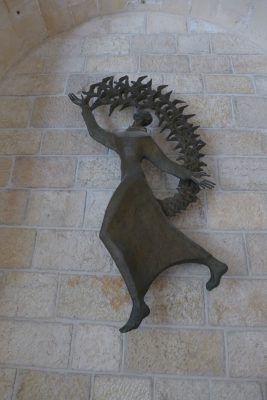Confession: Parish-Person-Priests

____________________________________________
March, 2018
Confession: More or Less
The contrast between two weeks of hearing confessions was dramatic. One Saturday I was at a suburban parish outside of Milwaukee, the next week I was at a church on the edge of downtown. Only two people showed up during the hour of confessions at the former parish in contrast to the long line of people waiting for confession at the second one. In listening to the confessions I was struck by the heavy burdens people bring into the confessional and the sense of joy and relief they manifested as they left. They had told their story, sought forgiveness, pledged to do better in the future and received absolution for all their sins. This happened in both places, but why the large crowd at one and not at the other?
A Parish Reputation For Penance
The parish on the edge of downtown is the Church of the Gesu. For many years the Jesuits have been offering frequent opportunities for the Sacrament of Reconciliation. People from all over the area come to participate in this Rite. This ministry is part of the charism and mission of the parish. Granted that most parish priests are stretched thin these days and this cuts into the available times for confession. A Penance Service that includes a group of penitents is frequently offered during Lent and Advent, but this offers only limited time for each penitent to interact with the confessor.
One option might be to focus on reconciliation and forgiveness one week out of every month. It would start with a explanation at all of the weekend Masses of how to participate in the sacrament. Extra times would be available for confession throughout the week, along with many other options, including conversations with staff members or counseling by trained professionals. Small sharing groups could be arranged to give people the chance to tell their own stories in a safe environment. As this week takes shape, other avenues might surface, including areas of division, injustices and social sin. The effort would be to offer non-threatening and welcoming ways for people to admit their shortcomings, seek forgiveness and be at peace within themselves and with those they may have hurt or alienated.
The Person and the Priest
The confessions that draw lines at Gesu do so because people know that they are welcomed and accepted. Over the brief span of confession a bonding is established between priest and penitent. No judgments, no condemnations, no accusations are made, only attentive listening and questions of clarification by the priest. There is an emphasis on God providing mercy, compassion and faithful love, rather than on a person’s sinfulness. When someone begins with a long list of personal failings and bad decisions, the priest might ask, “What is just one thing that is hardest to overcome or that causes you the most difficulty?” That often is enough to prompt the person to admit guilt, remorse, despair or confusion. As the level of trust and acceptance grows between priest and penitent, new hope, healing and fresh resolve gains a foothold. The bond between the two can often lead to discovering new ways that poor choices give way to better ones, temptations are replaced with renewing activities and attitudes, remorse and guilt are dissolved by increased self worth and positive thinking. All of this takes place in the realization that God is an intimate and loving Person who only asks for the person’s willingness to enter into a mutual relationship and believes that it can happen – as a matter of fact, is happening. All the rest – penance, act of contrition and absolution flow out of this realization.


